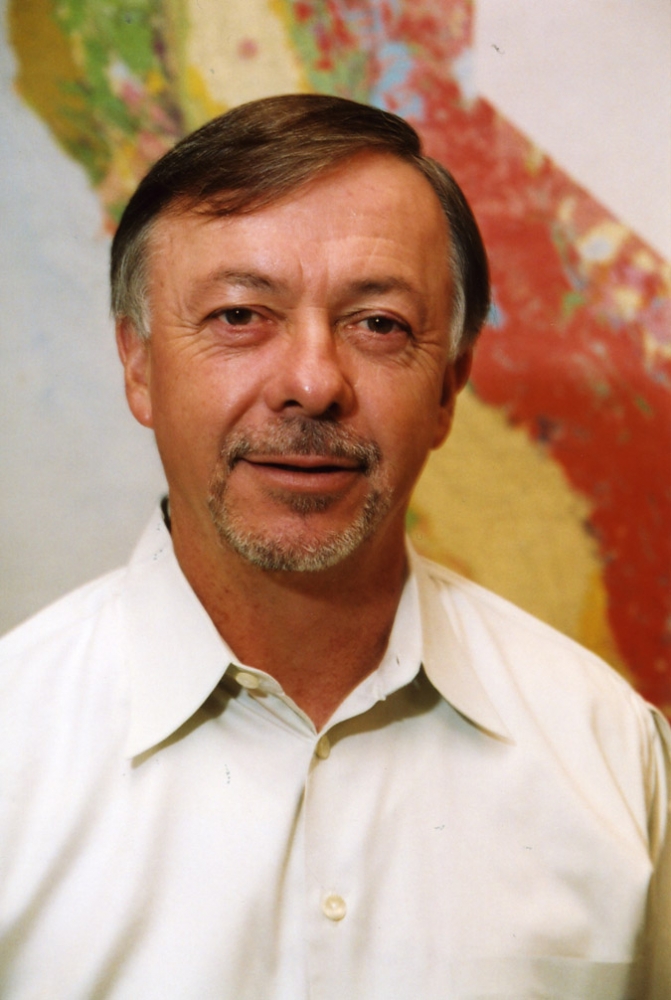
Ralph J. Archuleta, a professor of earth science at UC Santa Barbara, has been named the recipient of the Seismological Society of America's (SSA) top honor.
The award will be presented at the society's annual meeting on April 8, in Monterey, California.
Since beginning his career, Archuleta has established himself as a master researcher, leader, and teacher. For his outstanding contributions in seismology and earthquake engineering, the SSA will award Archuleta the Harry Fielding Reid Medal.
Archuleta, chair of the earth science department at UCSB, finished his doctoral work at UC San Diego in 1976, and since that time has conducted groundbreaking research, challenging long-held beliefs in the field and prompting new research with his findings. His work has allowed researchers to develop a better understanding of earthquake physics and hazards.
"I am deeply honored that my colleagues have felt that I deserved the Harry Fielding Reid Medal," said Archuleta. "Reid's study of the 1906 earthquake was the seminal research on the earthquake source.
Almost all of my research has been aimed at the same problem, so being awarded the Medal is ever so special."
"By awarding to Ralph Archuleta the Reid Medal, the nation's earthquake experts have recognized his great contributions to our understanding of strong motion seismology," said Michael Witherell, UCSB's vice chancellor for research. "This is a great day for the Department of Earth Sciences, the Institute of Crustal Studies, and the entire campus."
Archuleta's seminal work came with his research on the 1979 Imperial Valley earthquake in Southern California. With a publication in 1984, Archuleta became the first seismologist to show convincingly that an earthquake could rupture a fault at speeds faster than the shear wave, a fundamental property of elastic materials. Prior to Archuleta's research, most seismologists considered such behavior to be a theoretical curiosity. These findings have significant implications for seismic hazard analyses. Archuleta's work provides insights into how the earthquake rupture process is directly linked to the strong ground shaking experienced during an earthquake.
In addition to his work with the Imperial Valley earthquake, Archuleta has studied the effect of shallow sedimentary structures on strong ground motion. In the early 1980's he installed borehole seismometers at McGee Creek following the Mammoth Lakes earthquakes. He followed up on this in the early 1990s when he installed the Garner Valley Downhole Array that has provided crucial data for understanding the variations of acceleration with depth near the surface. He later accepted responsibility for maintaining two other California downhole arrays that had been installed by Kajima Corporation in Japan. These downhole arrays, situated near the San Andreas fault in northern California and between the San Jacinto and San Andreas fault zones in Southern California, provide essential data for estimating seismic hazard.
While conducting this critical seismological research, Archuleta also has been an active leader in the seismological world, publishing 10 papers in 2006 while serving as deputy director of the Southern California Earthquake Center (SCEC). He led UCSB's participation as a founding member of SCEC in 1991.
He later served as president of the Seismological Society of America in 1997 and 1998.
SSA is a scientific society devoted to the advancement of earthquake science. Founded in 1906 in San Francisco, the society now has members throughout the world representing a variety of technical interests: seismologists and other geophysicists, geologists, engineers, insurers, and policy-makers in preparedness and safety.
Issued: Mar. 12; updated: Mar. 13
Related Links
The Seismological Society of America
Department of Earth Science at UCSB
Ralph Archuleta



